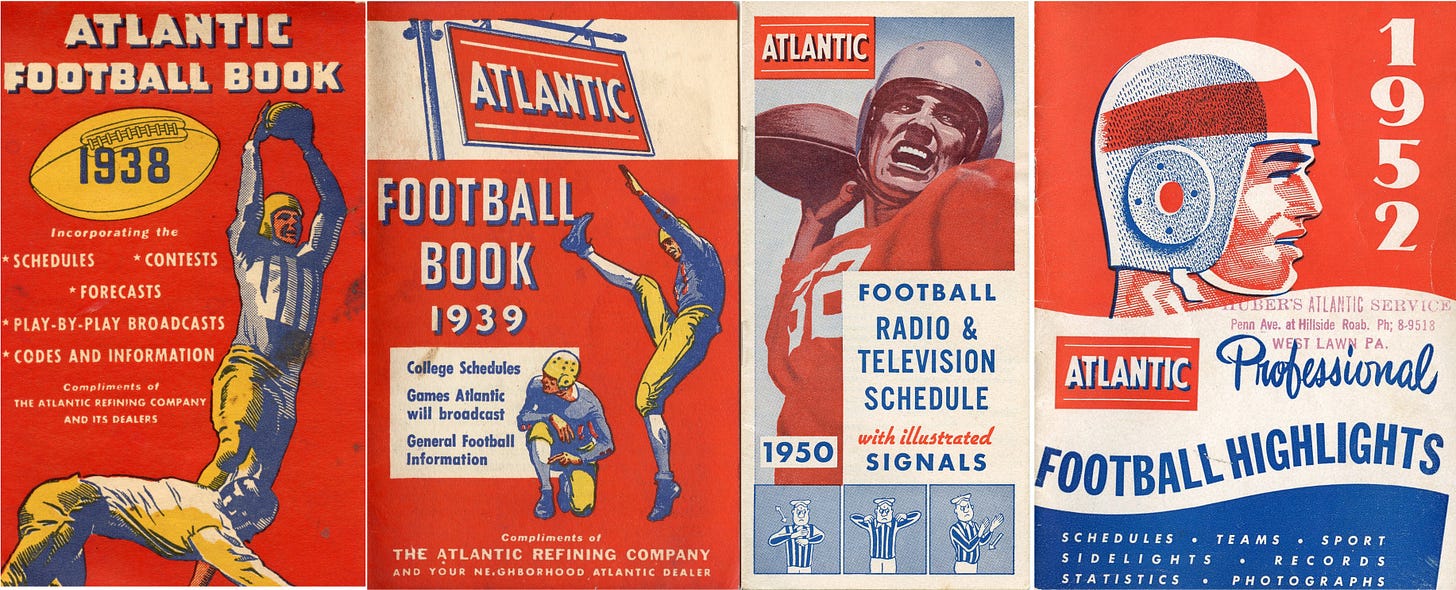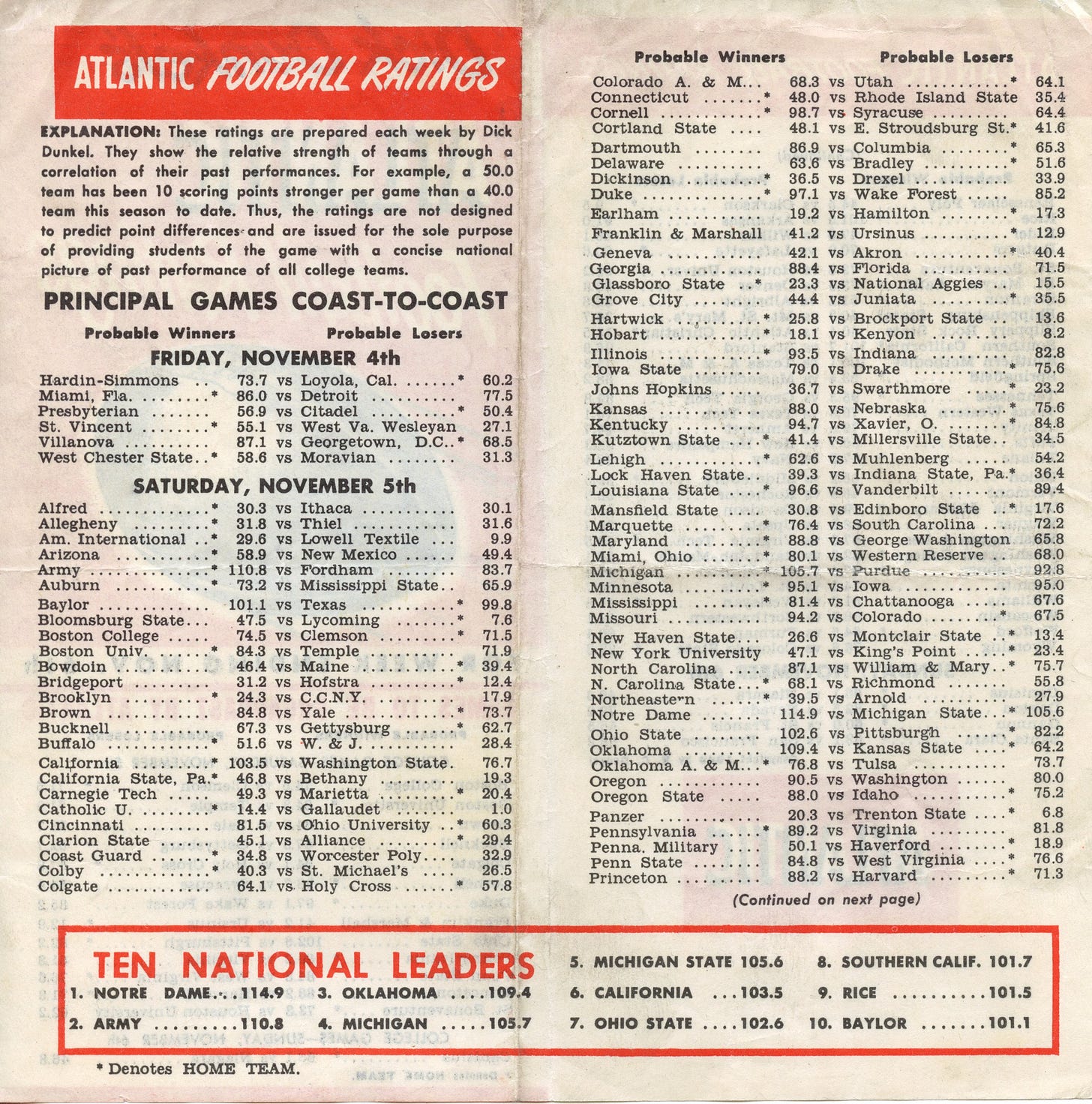Today's Tidbit... Atlantic Gas Stations and Dunkel's Football Ratings
Atlantic Gas stations sponsored East Coast football broadcasts in the early days of commercial radio and television. For years, they also published preseason booklets listing the games in which Atlantic Gas ran radio and television ads, and there were a lot of them, including many small colleges and a few high schools. Atlantic gave away the handy booklets at all their retail locations.
In 1930, Atlantic formed a relationship with Dick Dunkel, a Madison Avenue market forecaster who, in 1929, turned his mathematical eye toward predicting the winners of football and basketball games. His rankings were featured on top football radio shows until he started his own syndicated radio show that lasted several decades. Hundreds of newspapers across the country published the Dunkel ratings on Thursday or Friday, typically in a format listing a local grocery store, building supply firm, or other pillar of the community as the sponsor. Some advertisers also ran weekly contests with customers submitting predictions to win prizes.
Until the early 1970s, the Dunkel team performed all its calculations by hand, and since they rated 625 or more colleges some years, they had a heap of figurin' to do. Dunkel’s rating formula was the sum of a team's score differential and its strength of schedule, the latter being the secret part of the calculation. Better teams had higher point scores, and whether people interpreted the ratings correctly or not, many viewed the differences in the two team’s ratings as the expected difference in scores when they played. Over the years, the higher-rated team won about 80% of the games.
In addition to being published in newspapers, the weekly ratings were sent to every Atlantic Gas station for customers to review. Some years, they appear to have sent in-store posters with all the team ratings, but at least in 1949, they offered weekly ratings on leaflets like the one below.
Printed on a 7 x 7-inch sheet of paper, folded once, it listed each radio and television game for the coming weekend, including the four college games played that Sunday.
As seen at the bottom of the page above, Dunkel rated Notre Dame No. 1 that week, earning a rating of 114.9. The Top 10 teams listed at the bottom of the page compare reasonably well to the end-of-season AP Ratings. They missed on three: Michigan State finished the season 19th, Baylor tied for 20th, and Southern Cal was unranked.
Notre Dame
Oklahoma
California
Army
Rice
Ohio State
Michigan
Minnesota
LSU
Pacific
Perhaps more impressive than the accuracy of their predictions was their ability to distribute their information. Given the communication and transportation systems available in 1949, Dunkel and his team performed all the calculations by hand, formatted the various ads and analyses by region, and sent them into the syndicated newspaper distribution processes of the time.
Creating the weekly Atlantic Gas pamphlets required them to calculate the ratings, design, print, and ship the leaflets to each gas station so they arrived within a day or two. Dunkel or Atlantic Gas somehow managed to do this before USPS Overnight Shipping or FedEx existed, though UPS had been around for 40 years. How they managed to pull off that feat is anyone’s guess, so if you happen to be an authority on parcel shipments in the late 1940s, please comment below.
Few of us visit the local gas station nowadays to help place our bets or star in the office pool, but Atlantic Gas and Dunkel helped many Monday Morning Quarterbacks improve their game on Fridays throughout the 1949 season.
Football Archaeology is reader-supported. Click here to buy one of my books or otherwise support the site.




